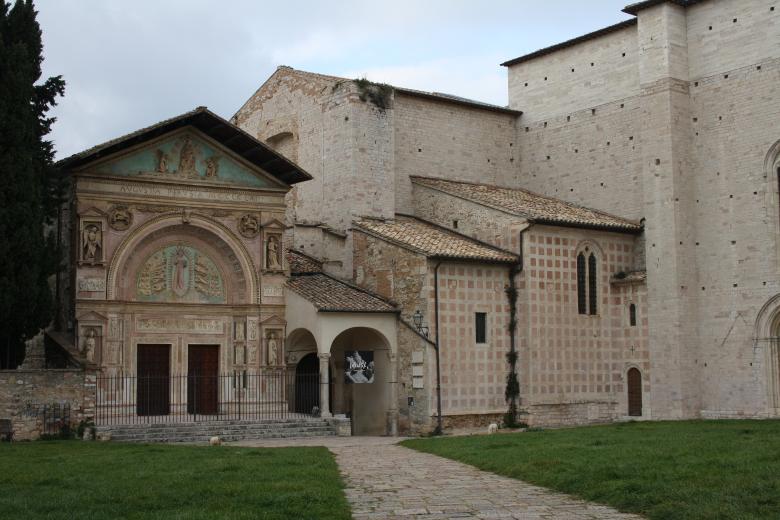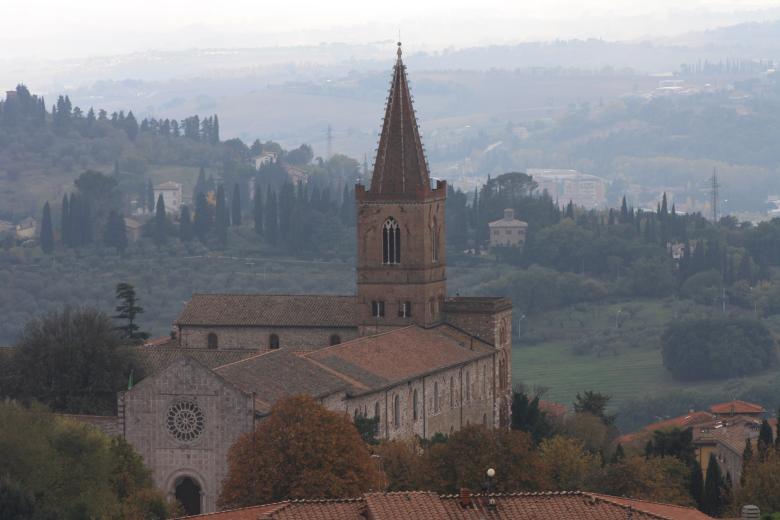Cathedral of San Lorenzo
The Cathedral of San Lorenzo is located in the historic center of Perugia, in Piazza IV Novembre, defining its northern side.
The Cathedral of San Lorenzo is one of the city’s most emblematic religious buildings. Inside, it houses Federico Barocci's Deposition from the Cross and the precious relic of the Virgin’s wedding ring.
Once, the Madonna Enthroned with Saints John the Baptist, Onofrio, Lawrence, and Herculanus by Luca Signorelli was also kept here, though now it is in the Chapter Museum (accessible from the cathedral cloister).
An initial church dedicated to the protomartyr Lawrence, martyred in Rome in 258 AD, was built as early as the 9th century on top of the ancient forum of the Etruscan-Roman city. However, no traces of this original construction remain.
The current church, designed in the 14th century, assumed its present form in the 15th century.
The exterior, left unfinished, features a façade and side walls clad in red and white marble.
The main façade, much less imposing than the side facing Piazza IV Novembre, opens onto Piazza Danti and is adorned with a baroque portal from 1729, designed by Pietro Carattoli.
The side wall is marked by a portal from 1568 by Galeazzo Alessi, above which a wooden Crucifix was placed in 1540 by the citizens of Perugia during the Salt War against Pope Paul III. Continuing along this side, one finds the pulpit where, according to legend, Saint Bernardino of Siena preached to the people of Perugia between 1425 and 1427. The bronze statue of Pope Julius III, created by Vincenzo Danti in the 16th century, is also notable.
Inside, the church has three naves with five bays each, separated by sturdy pillars, and is completed by a crossing, transept arms, and five apsidal chapels.
The vaults are covered with dense decorative motifs that form a true anthology of 18th-century painting.





























.jpeg/0d7d918e-eddd-ed4c-9da2-23a6917261f0?width=780)
.jpg/57eda7af-f14d-d05d-f11c-d1cdb56c5f9f?width=780)






